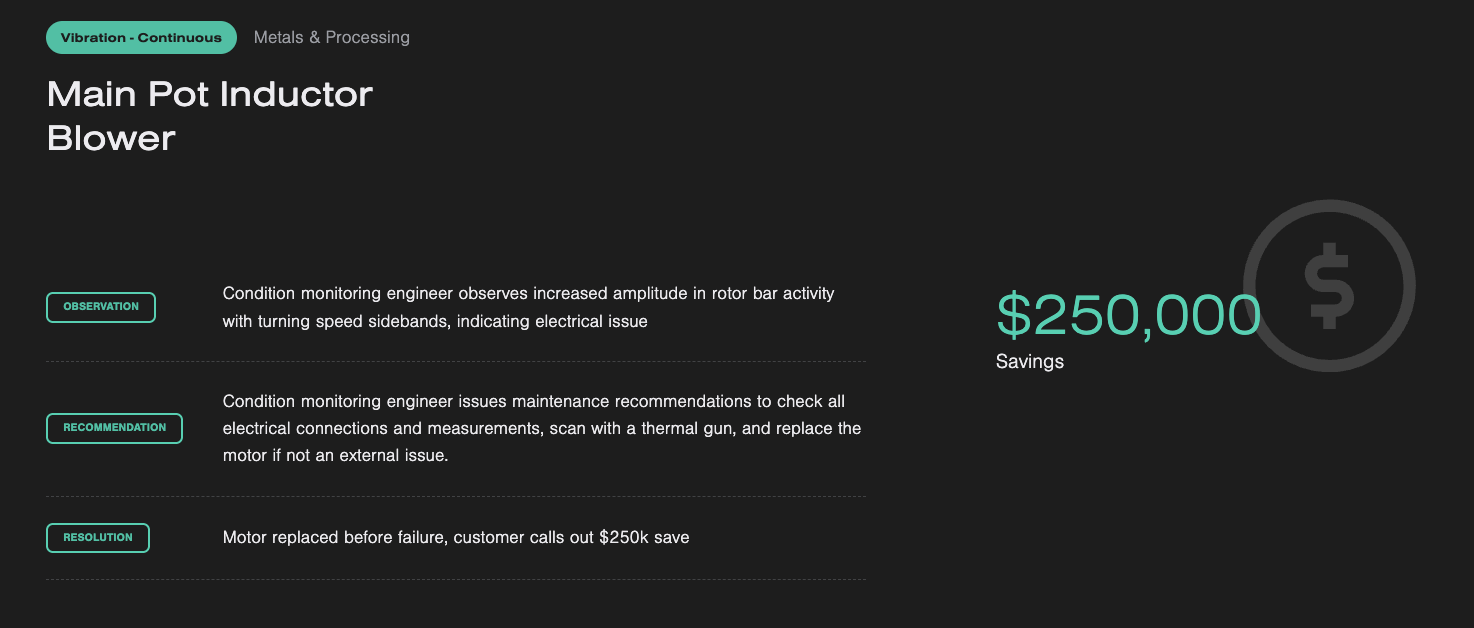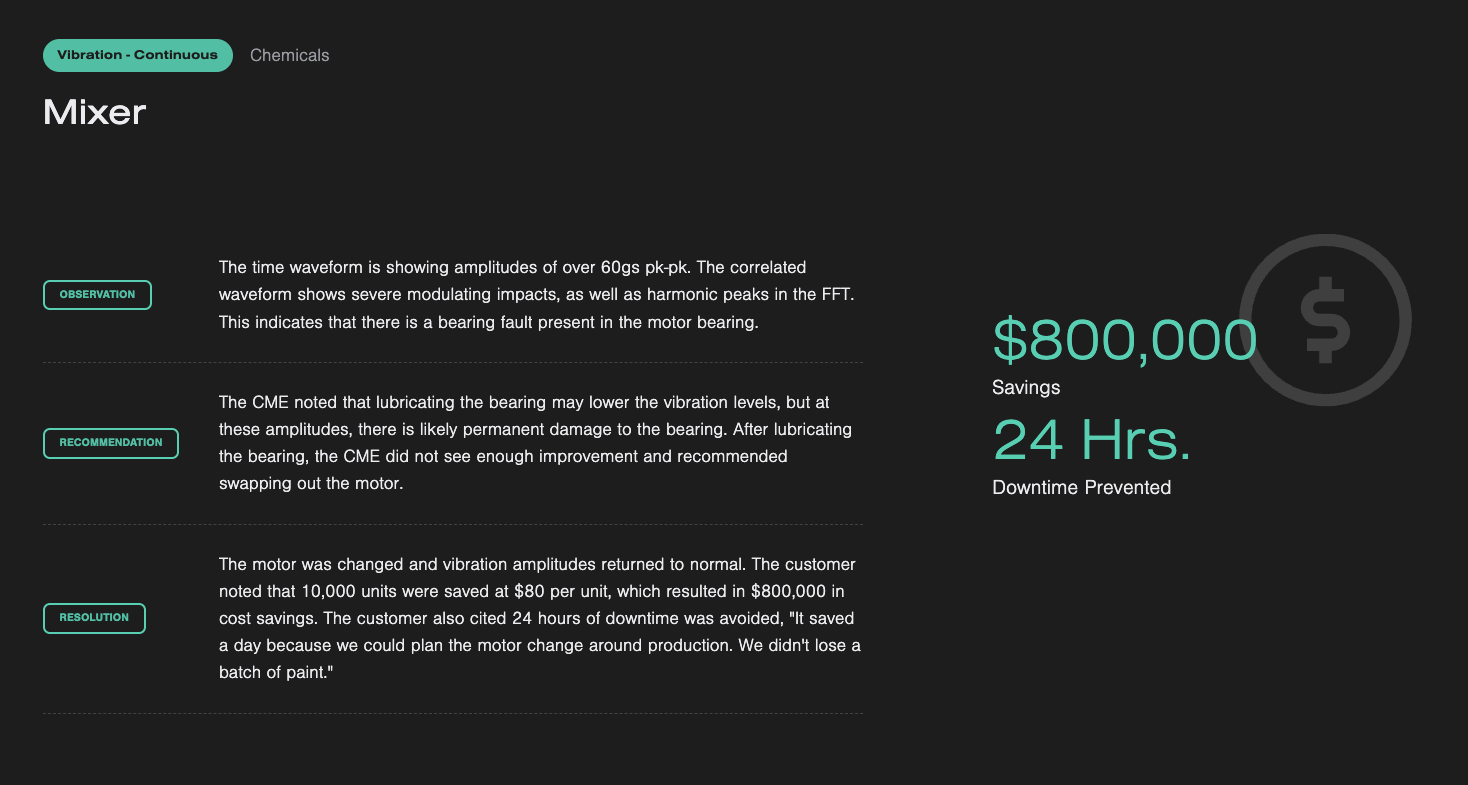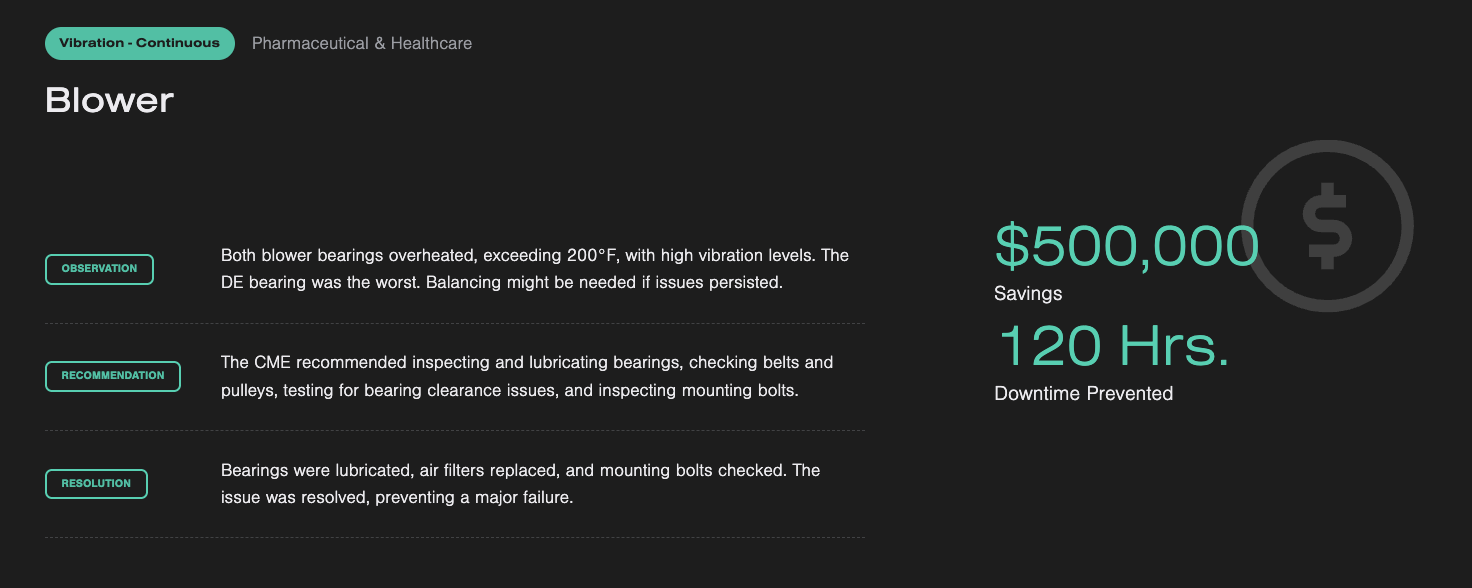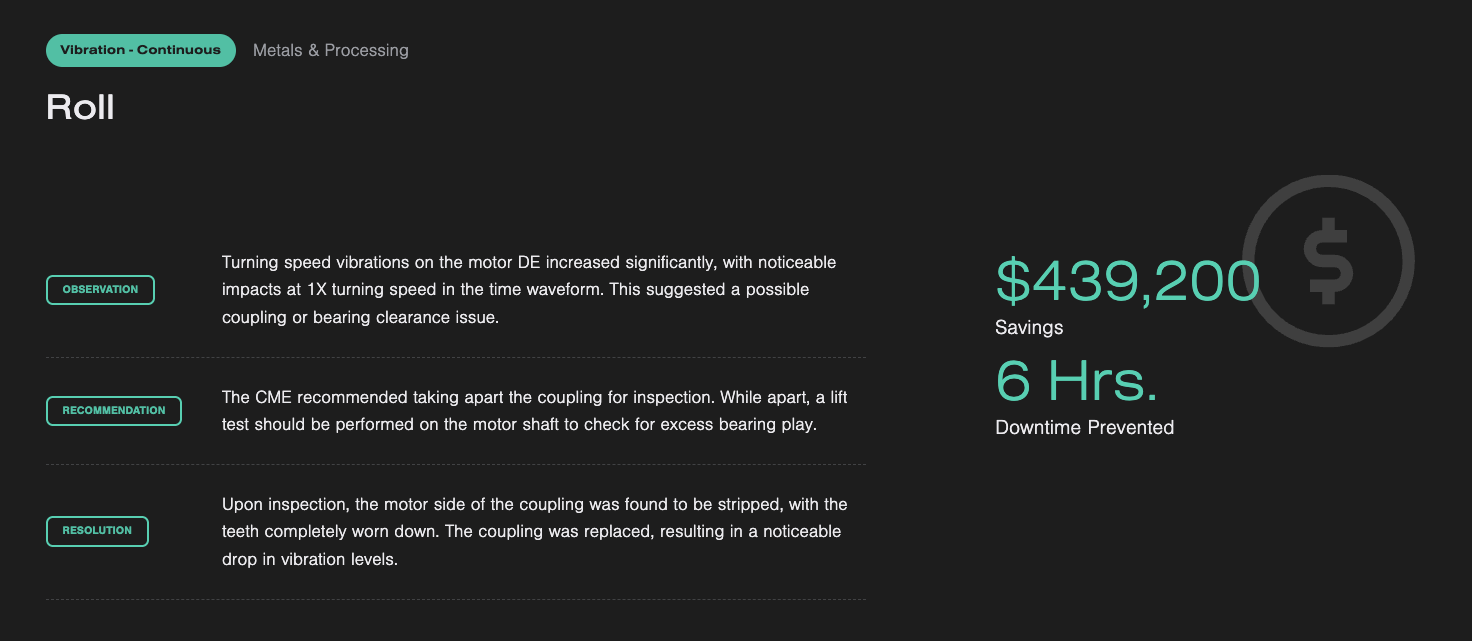Predictive maintenance should make life easier for your maintenance team. But for many plants, the reality looks different. Implementation is a pain, there's too much unfiltered maintenance data streaming in, the predictive maintenance software is hard to use, and processes tend to slow response times rather than speed them up.
These common barriers to adoption and ROI have soured a lot of manufacturers on using predictive maintenance. Many resort to traditional maintenance practices, abandoning the hope of ever seeing a return on their investment.
So, what's the root problem here? Complexity. Yes, the technology is complex, but your predictive maintenance program shouldn't be. Here's how you can help your team overcome their greatest frustrations with predictive maintenance tools and workflows and start driving value daily.
Signs your predictive maintenance program is too complex
Real-time data, AI, and machine learning should drive seamless workflows that allow your team to optimize maintenance while ensuring critical assets maintain peak health and performance. If that's not happening, you may recognize this all-too-familiar pattern:
- Limited adoption or stalled rollout – The predictive maintenance process starts strong in a pilot, but there's not enough momentum to expand the program across the plant.
- Data overload – With hundreds of unprioritized alerts flowing in daily, it's impossible to determine what really matters.
- Low trust in alerts – After too many false alarms or missed faults, the team starts to ignore warnings.
- No measurable ROI of predictive maintenance – Downtime, maintenance costs, or throughput remain unchanged.
- Backslide into reactive maintenance – Teams revert to firefighting mode because PdM feels like “extra work.”
Problem #1: Initial burdens make onboarding a challenge
The challenge: Heavy IT requirements, steep training curves, and complicated predictive maintenance processes make teams hesitant to engage.
The impact: Even with top predictive maintenance technologies, adoption stalls, and programs fail to scale.
The reality: With a 1-2 day install included with your service, seamless integrations with your existing tech stack, and ongoing guidance from a CAT III+ reliability expert, your team can make the transition easily and start creating value in no time.
PdM made simple: Easy $250,000 blower motor save

Vibration analysis identified rotor bar activity indicating an electrical issue in a blower motor. The provider's condition monitoring engineer (CME), dedicated to the facility, reached out and recommended targeted inspections and a possible motor replacement. The team carried out the inspections, and the motor was replaced before failure, saving $250,000 in potential losses.
Problem #2: Data overload drains the team
The challenge: Many predictive maintenance systems flood maintenance teams with maintenance data and expect them to sort the signal from the noise. This leads to alert fatigue, slower response times, and missed issues.
The impact: When teams stop trusting their condition monitoring data, predictive maintenance work stops delivering results—and machine failures slip through.
The reality: What's needed is the right balance of AI + human expertise. A CME who's monitoring your facility's AI alerts can validate the data, prevent false alarms from getting through, and call out the most urgent maintenance needs.
PdM made simple: Easy $400,000 fan save

At a metal processing facility, AI caught a potential bearing defeat following a recent bearing replacement. With continued vibration on the ODE side, the team's CME partner recommended replacing the ODE bearing again. The team replaced the full wheel assembly, saving $400,000 and preventing 12 hours of downtime.
Curious about how CMEs work behind the scenes to help maintenance teams prevent failures? Watch the on-demand recording of our recent webinar Meet the Minds Behind the Monitoring: A Conversation with Our Condition Monitoring Engineers. You'll learn how a full-service prescriptive maintenance model can defeat complexity and empower your team to win. Watch the replay here.
Problem #3: Unreliable data wastes time and effort
The challenge: Predictive maintenance success depends on having accurate data from reliable sensors and best-in-class AI technology. If sensors can’t handle the plant environment or are poorly installed, and predictive models are flawed, condition monitoring data can exacerbate maintenance challenges.
The impact: Bad inputs lead to unnecessary maintenance, eroded trust in predictive insights, and wasted maintenance investments.
The reality: Wireless triaxial vibration sensors built for harsh operating conditions are a must. So are expert-trained AI models, which draw from over 200 million machine hours and are capable of detecting 100+ failure modes. CME partners offer maintenance teams the final layer of validation and prescriptive insights, eliminating all doubt.
PdM made simple: Easy $800,000 paint mixer save

At a chemical plant, a potential bearing fault was detected in a paint mixer motor. The team's CME partner recommended lubricating the bearing, but he believed there was permanent damage when vibration levels didn't change. He recommended a proactive motor replacement, which was executed without losing a production batch. This timely intervention prevented 24 hours of downtime and saved $800,000 in product losses.
Problem #4: Workflows work against you
The challenge: Predictive maintenance technologies that don’t integrate with existing maintenance management systems force teams to juggle multiple platforms.
The impact: Work orders are delayed, duplicated, or dropped entirely, reducing maintenance efficiency.
The reality: Your predictive maintenance workflow should connect seamlessly with your existing tech stack (CMMS, ERP, etc.). This tight integration eliminates silos and manual workarounds and ensures critical insights and updates flow instantly into work orders and scheduling processes. With this setup, your maintenance team can act quickly and maximize the value of both PdM and capital investments.
PdM made simple: Easy $500,000 blower save

High vibration levels and excessive heat indicated a bearing issue, with a possible need for balancing. Based on timely recommendations from their CME partner, the team inspected and lubricated the bearings, replaced air filters, and checked mounting bolts. Vibration and temperature returned to normal ranges, preventing a major failure and 120 hours of downtime.
Problem #5: Skills gap is tough to overcome
The challenge: Many predictive maintenance solutions assume in-house expertise to interpret predictive analytics and perform diagnostics. Responsive support is lacking, with maintenance teams having to call hotlines and often wait days for expert help.
The impact: Valuable data-driven predictive maintenance insights go unused, and adoption lags.
The reality: A dedicated CME is there to monitor and analyze the data and reach out proactively, day in and day out. Your team will never be left guessing about what needs attention, what to look for, or how to resolve the issue. This expert partnership can accelerate adoption, build confidence in the system, and help even lean maintenance teams ensure they're taking the right actions at the right time.
PdM made simple: Easy $439,200 roll save

In a metal processing plant, a sharp increase in turning speed vibrations suggested a coupling or bearing clearance issue. The CME advised the team to disassemble the coupling, inspect it, and perform a lift test on the motor shaft to check for excess bearing play. The team found that the motor side of the coupling was completely stripped. After they replaced it, vibration levels dropped, preventing six hours of costly downtime.
With a dedicated CME in your corner, high-value asset saves are no sweat
This seven-figure save on a brand new chiller pump was the result of timely CME outreach and simple maintenance performed during scheduled downtime. For teams with the expert support they need, asset saves like this come easily.
Simplifying predictive maintenance for sustained success
The most successful predictive maintenance strategies are the ones your team will actually use. The essential program elements that keep predictive maintenance simple and friction free include:
- Reliable condition monitoring data
- Ongoing expert support to ease adoption, prevent alert fatigue, and bridge skill gaps
- Clear, actionable predictive insights and prioritization of maintenance needs
- Workflows that fit into daily maintenance operations
When predictive maintenance is easy to use, proves its value through asset saves and greater efficiency, and integrates seamlessly with your maintenance schedule, the ROI comes quickly and continues to grow.
Get the full benefits of predictive maintenance starting on day one
Complexity may be the biggest roadblock to getting predictive maintenance right. When teams are buried in unfiltered data, forced to work around clunky processes, or left without the expertise to act on insights, PdM stops delivering on its promise.
With timely prescriptive recommendations and automated, seamless workflows, your team can unlock the full benefits of predictive maintenance and accelerate progress on KPIs. They'll be empowered to eliminate reactive chaos and stress, lower maintenance costs, extend asset life, and enjoy more personal downtime.
If you’re ready to simplify your predictive maintenance program and start seeing measurable results, schedule your free consultation with an AssetWatch expert. We'll show you how an end-to-end PdM solution can help your team drive value like never before.

.webp)
.webp)















